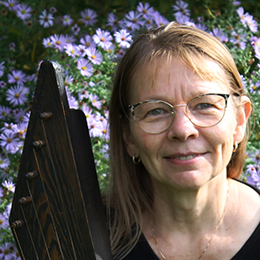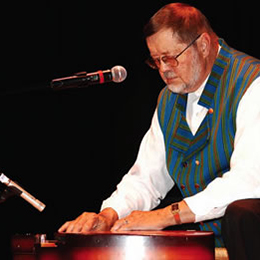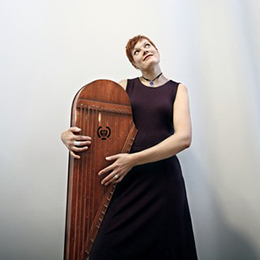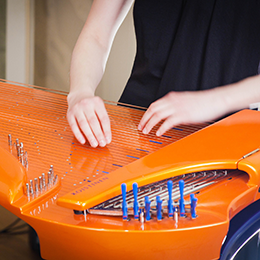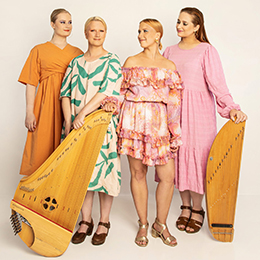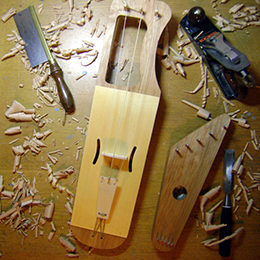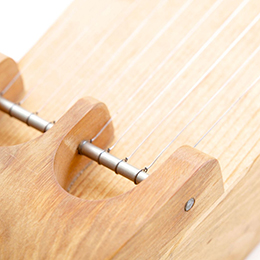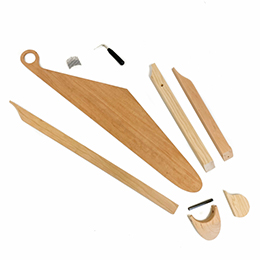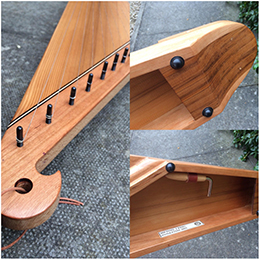The Gateway Harp
by Catherine Madsen
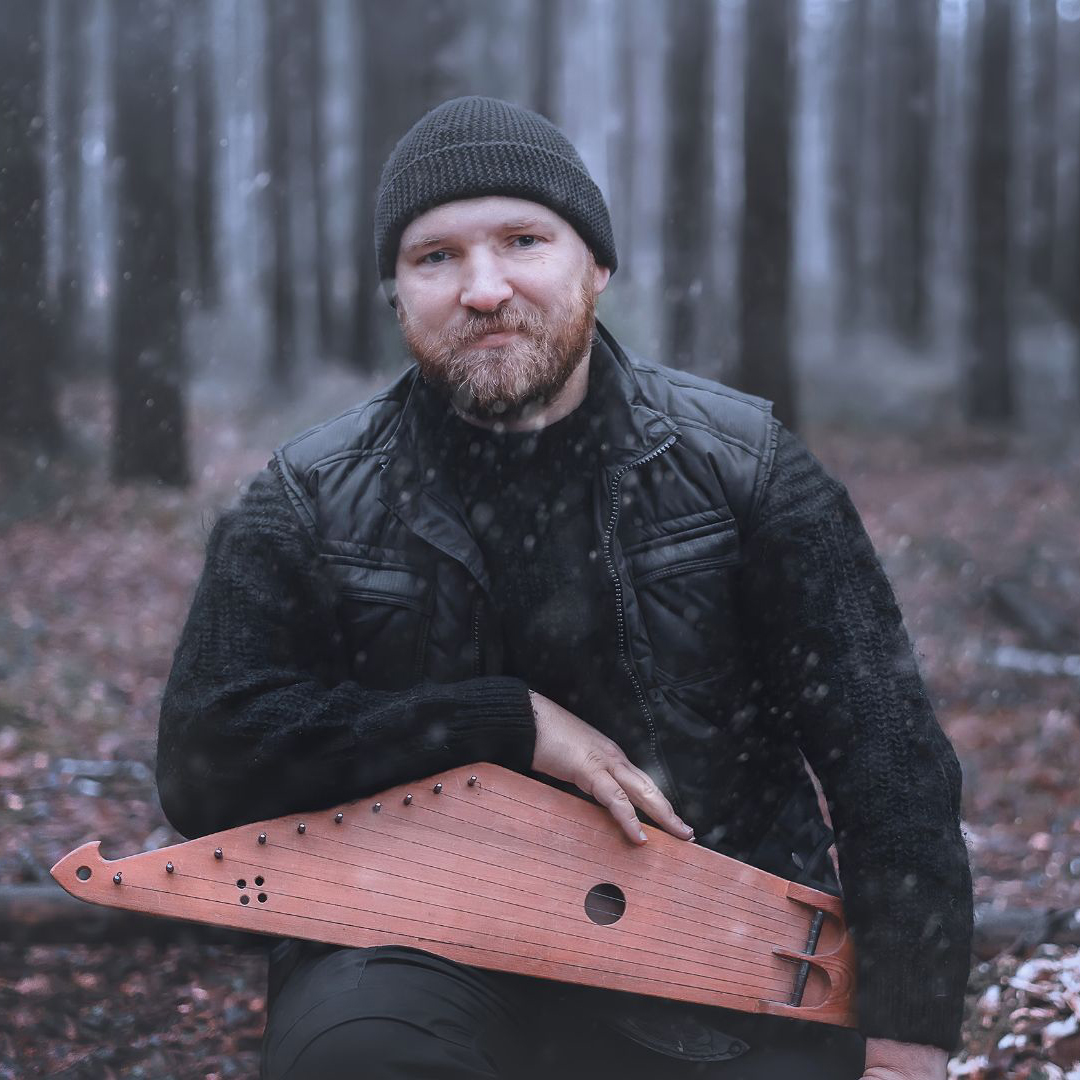
The kantele, variously classed as a kind of zither, psaltery or lap harp, is Finland’s national instrument. Scholars debate whether its history reaches back a thousand years or perhaps as many as three thousand. (Mythologically speaking, it originated when the wizard Väinämöinen strung the jawbone of a giant pike with a few hairs from a stallion’s tail, as told in the Kalevala.) It’s one of a family of similar instruments from around the Baltic region.
Traditionally the kantele had five or six horsehair strings, was hollowed out from a single block of wood, and was played at home in an open-ended, improvisatory style that could go on for hours. Runo songs—the folk poems later collected into the Kalevala—were sung to kantele accompaniment. In the 19th century, as Scandinavian and European influences came into Finland, more strings (generally of wire) were added to enable the playing of Scandinavian dance tunes and classical music. Today there are 5-string, 10-string, 11-string and 15-string diatonic kanteles, as well as the large chromatic concert kantele developed in the 1920s, which can have up to 40 strings and uses a damper board and built-in sharping/flatting levers similar to a concert harp’s.
The contemporary kantele master and scholar Arja Kastinen has experimented with many different sizes of kanteles, playing techniques, historic instruments, and string materials (horsehair included). Her YouTube channel has many wonderful examples of her playing, including excerpts from a continuous 6-hour improvisation which was done in collaboration with brain researchers. This recent 9-minute video features Oskari Lehtonen on percussion. My favorite, from her album The Last Gathering, is the elegiac, understated “Until on the Other Side.” Kastinen’s website offers learning materials, video tutorials, research, albums, books, and information about her workshops and private lessons.
The late Wilho Saari, recipient of an NEA National Heritage Fellowship in 2006, demonstrates 5- and 10-string kantele technique and discusses his workshops with children here. This interview with Pauliina Syrjälä features a 15-string kantele (11 melody strings and four bass strings). Olga Shishkina plays a Sibelius piece on the concert kantele here and a jazzy version of a traditional Finnish song on electric concert kantele here . For those intrigued by the concert kantele, Shishkina’s series of technique tutorials is posted here. Also, don’t miss the high-energy kantele-and-vocal quartet Kardemimmit, featured in this 2021 pandemic-era online concert.
If you want to buy a kantele, among the best known makers are Melodia Soitin and Koistinen Kantele. If you want to build your own, Musicmakers in Stillwater, MN sells both finished kanteles and an excellent kit for a 10-string kantele. (Rather than being hollowed from a single block of wood, it’s assembled from precut pieces.) Michael J. King offers a full video course for building several sizes of kantele, and also plans for an electric kantele; he’s posted an hour-long video on building and playing the kantele. Many young children in Finland and elsewhere begin their musical education on a 5-string kantele. Be warned, it can trigger an insatiable desire for more strings. I started (well past childhood) with a 10-string kantele in 2015, as a modest and affordable approximation of the folk harp I’d started to learn in my twenties; by 2019 I was playing a 36-string lever harp and didn’t care that it wasn’t affordable. The level of sheer beauty coming out of these instruments is hard to resist. Many more examples than I’ve included are available online. Happy hunting.
Resources
Click the links below to learn more about the performers and shops mentioned in the article.
About the Author
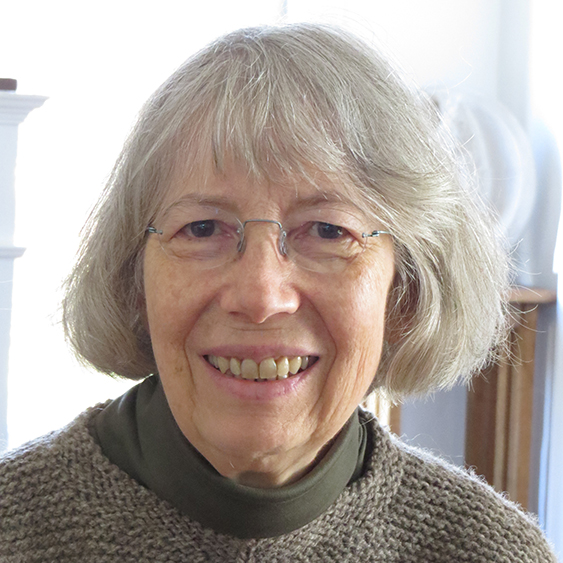
Catherine Madsen is a writer, singer and folk harper now living in Michigan. The three years she spent in Fairbanks as a child (1962-65) were a turning point in her life, and she established the Circumpolar Music Series as a gift of gratitude.


